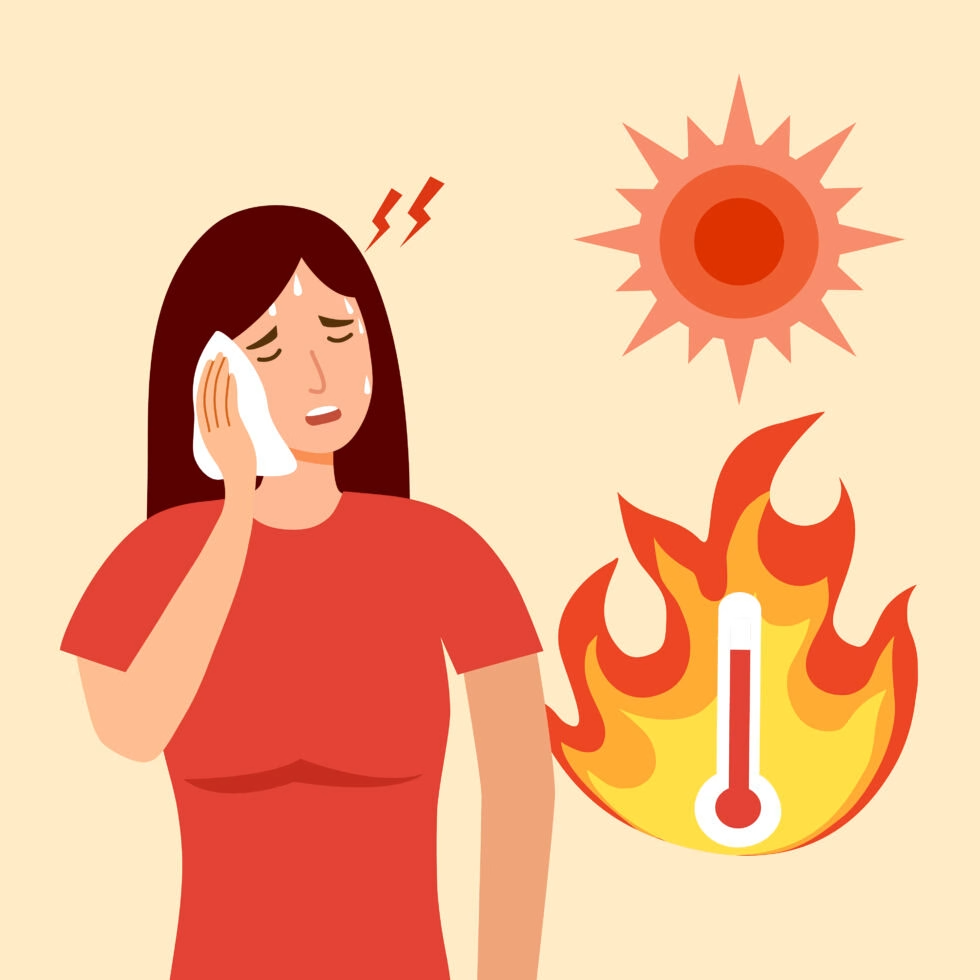
Here’s how you can identify sun poisoning & other heat-related illnesses this summer. Need fast care? Walk into our urgent care clinic.
It’s easy to get caught up in the fun of summer, especially here in Indian Trail, where warm weather calls for everything from weekend camping trips at Crowders Mountain State Park to cookouts, carnivals and time at the pool. But if you’re not careful, too much heat or sun can turn a good day into a serious medical concern.
Most people know what a sunburn feels like. But not everyone realizes that sun poisoning, a severe reaction to UV exposure, can lead to more dangerous heat-related illnesses like heat exhaustion and even heatstroke. Understanding the signs and symptoms, and how to tell them apart can make all the difference.
What Is Sun Poisoning?
Sun poisoning is more than your average sunburn. It’s the painful aftermath of too much ultraviolet (UV) rays. Sun poisoning typically comes from the sun; however, tanning beds have also been known to cause it. Unlike a basic burn, the effects of sun poisoning on your skin don’t fade in a couple of days.
In fact, symptoms can start to appear just a few hours after sun exposure or may develop slowly over the next day. The most common cause? Spending extended time in the sun without protection.
Common Symptoms of Sun Poisoning:
- Deep redness, swelling and skin pain
- Itchy skin, rash or small bumps
- Blisters or hives
- Headache, fever and chills
- Dizziness, dehydration or fatigue
- Nausea
Recovery can take anywhere from a few days to over a week, specifically if blisters or a rash are involved. As your body tries to heal, the affected skin may become increasingly itchy and irritated.
How Sun Poisoning Can Lead to Heat Exhaustion
When your body is already stressed from the effects of sun poisoning, especially if you’re dehydrated or continue spending time in the heat, it can tip over into heat exhaustion. A condition caused by prolonged exposure to high temperatures, if heat exhaustion isn’t addressed, it can lead to heatstroke, which is a medical emergency.
Recognizing Heat Exhaustion
Heat exhaustion occurs when your body loses too much water and salt through sweating, often from a combination of high temperatures, humidity and physical activity.
Common Signs of Heat Exhaustion:
- Heavy sweating
- Weakness or tiredness
- Dizziness or lightheadedness
- Nausea or vomiting
- Muscle cramps
- Headache
- Fainting
- Skin that feels cool, pale and clammy
One of the key signs of heat exhaustion is how the skin looks and feels, typically cool and moist, as your body tries to cool itself through sweating.
What Makes Heatstroke Different?
Heatstroke is a life-threatening condition that happens when your body can no longer regulate its internal temperature. It often develops from untreated heat exhaustion, but in some cases, it can come on suddenly without warning.
The most important way to tell the difference between heat exhaustion and heatstroke is by observing the skin:
- With heat exhaustion, the skin is cool, pale and clammy
- With heatstroke, the skin becomes hot, dry or only slightly moist
Additional Signs of Heatstroke:
- Body temperature of 104°F or higher
- Rapid and strong pulse
- Confusion, slurred speech or irritability
- Seizures or loss of consciousness
- Nausea or a throbbing headache
If you suspect someone is experiencing heatstroke, call 911 immediately. While waiting for emergency help, move them to a shaded or cool area and use cool compresses, wet towels or ice packs placed under the arms and around the neck to help lower body temperature.
Preventing Heat-Related Illnesses
It’s not just the temperature, it’s the humidity, too. In the Carolinas, high humidity makes it harder for sweat to evaporate, which means your body has a tougher time staying cool. Whether you’re spending time outdoors for fun or work, keep these tips in mind:
- Drink water regularly throughout the day, not just when you’re thirsty
- Wear lightweight, light-colored, loose-fitting clothing
- Use sunscreen with SPF 30+ and reapply every two hours
- Avoid direct sun and strenuous activity between 10 a.m. and 4 p.m. when UV rays are strongest
- Take frequent breaks in the shade or indoors
- Acclimate slowly to hot weather, especially early in the summer
- Check the weather for heat advisories before planning activities
How We Can Help
When home remedies aren’t cutting it or symptoms seem to be getting worse, AFC Indian Trail is here for you seven days a week, with no appointment necessary.
If you’re dealing with sun poisoning, we can:
- Assess the severity of the skin damage
- Treat blisters and rashes
- Provide prescriptions for stronger anti-inflammatory creams or antihistamines
- Rule out other causes of rash or irritation
If you’re experiencing heat exhaustion, some members of our team are trained in IV hydration therapy, and we can:
- Evaluate your symptoms
- Replenish fluids and electrolytes
- Help prevent further complications
If someone is experiencing heatstroke, do not come to urgent care, call 911 immediately.
Summer Should Be Fun and Safe
Whether you’re spending a day at the park, biking with your friends or relaxing on your back porch, don’t ignore the signs your body might be getting too hot. Sun poisoning, heat exhaustion and heatstroke are all preventable, but they can turn dangerous quickly.
If you’re unsure whether your symptoms are mild or something more serious, our medical team at AFC Indian Trail is here to care for you.